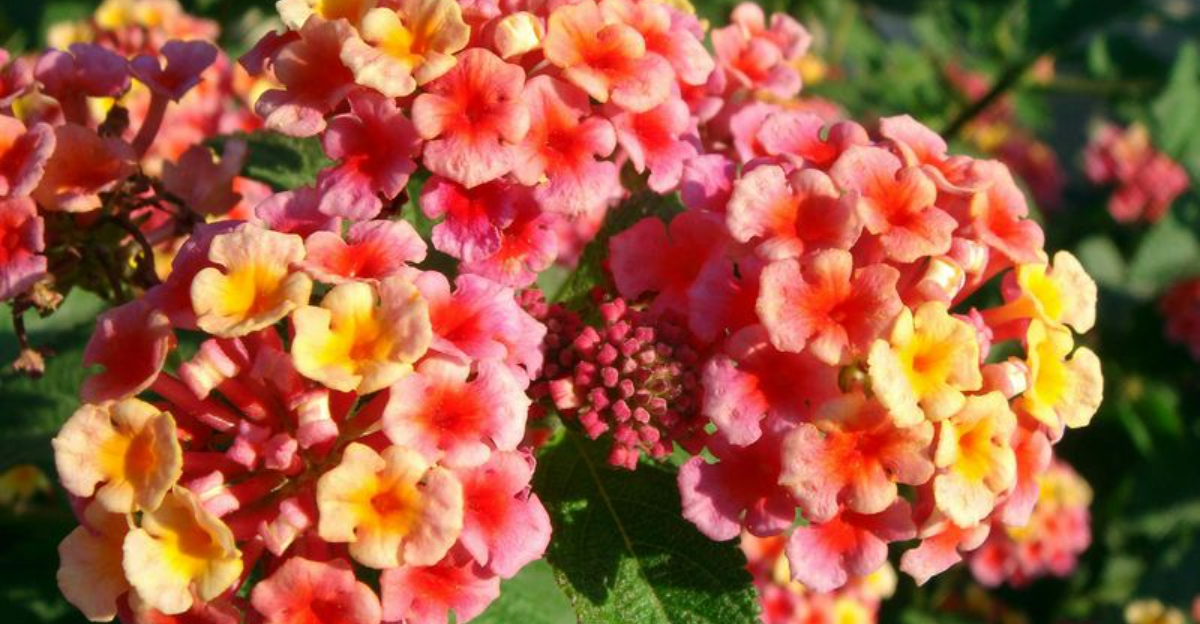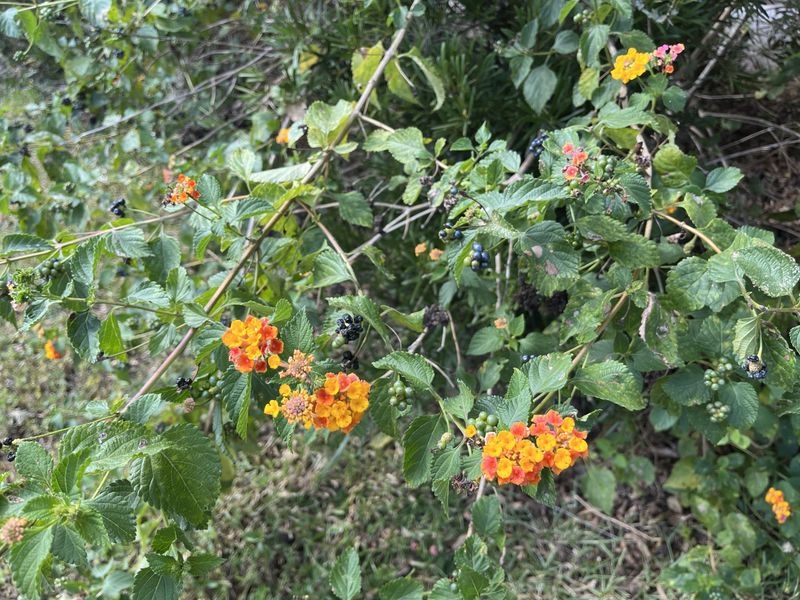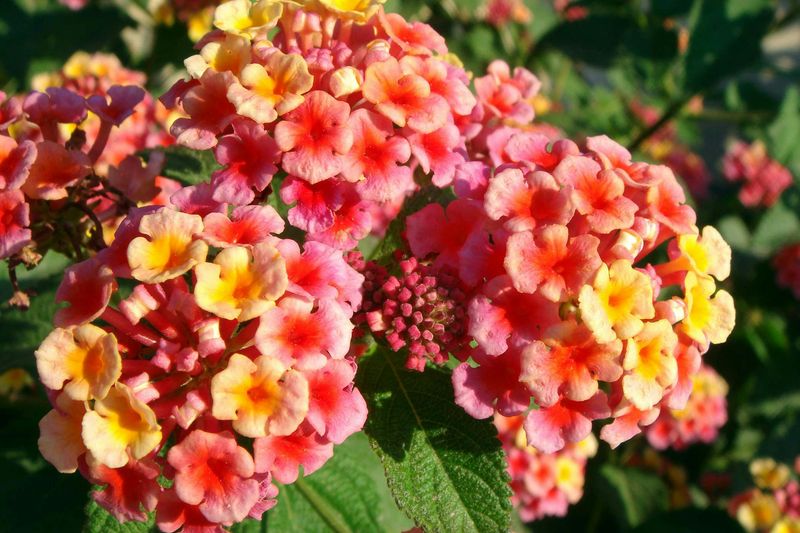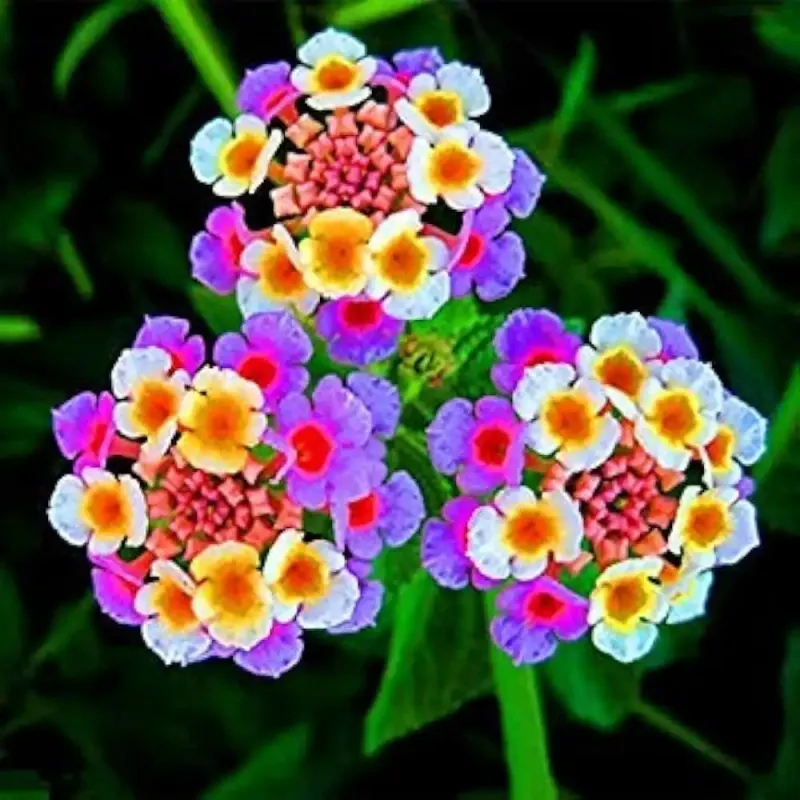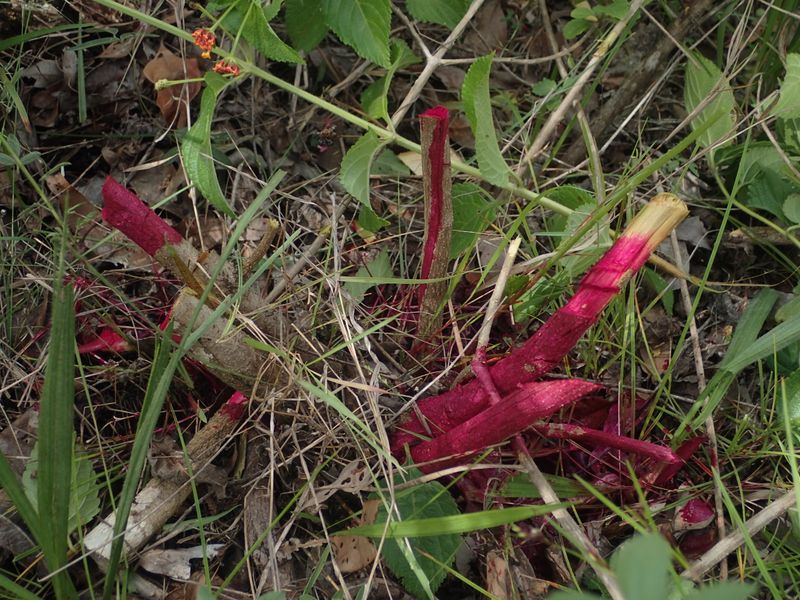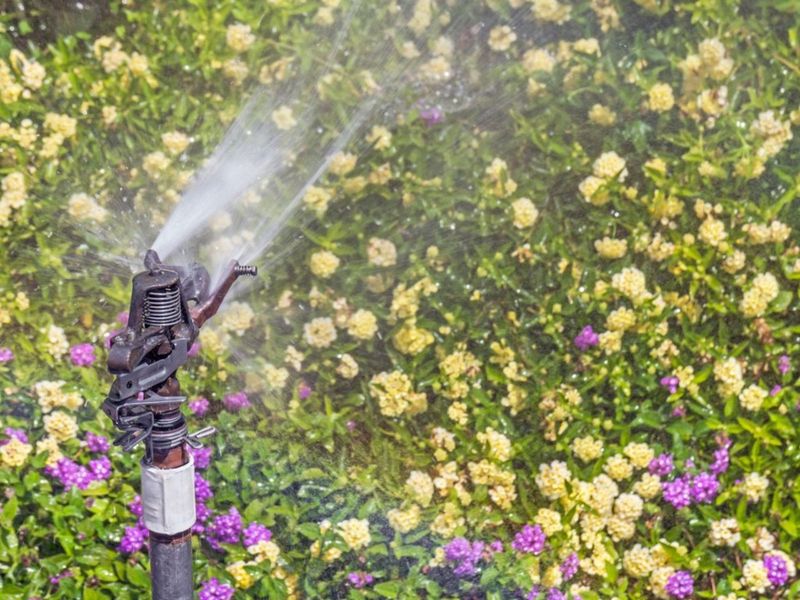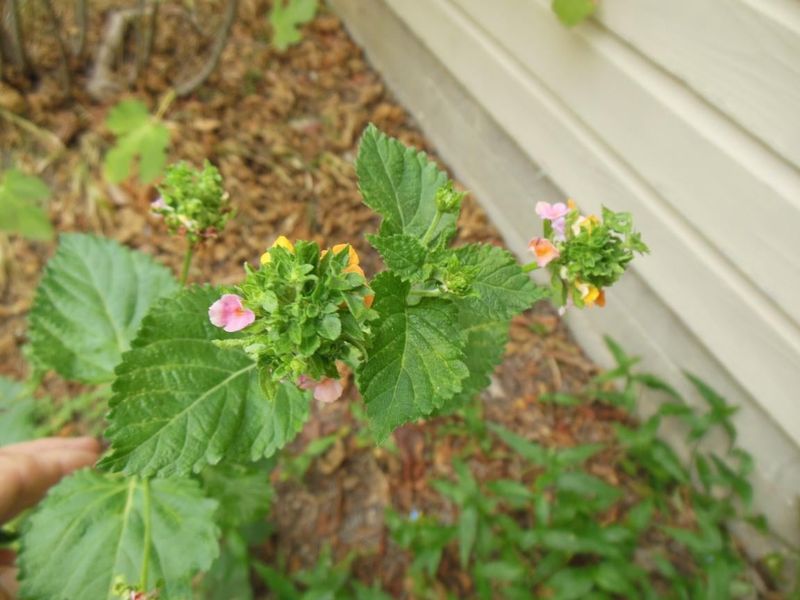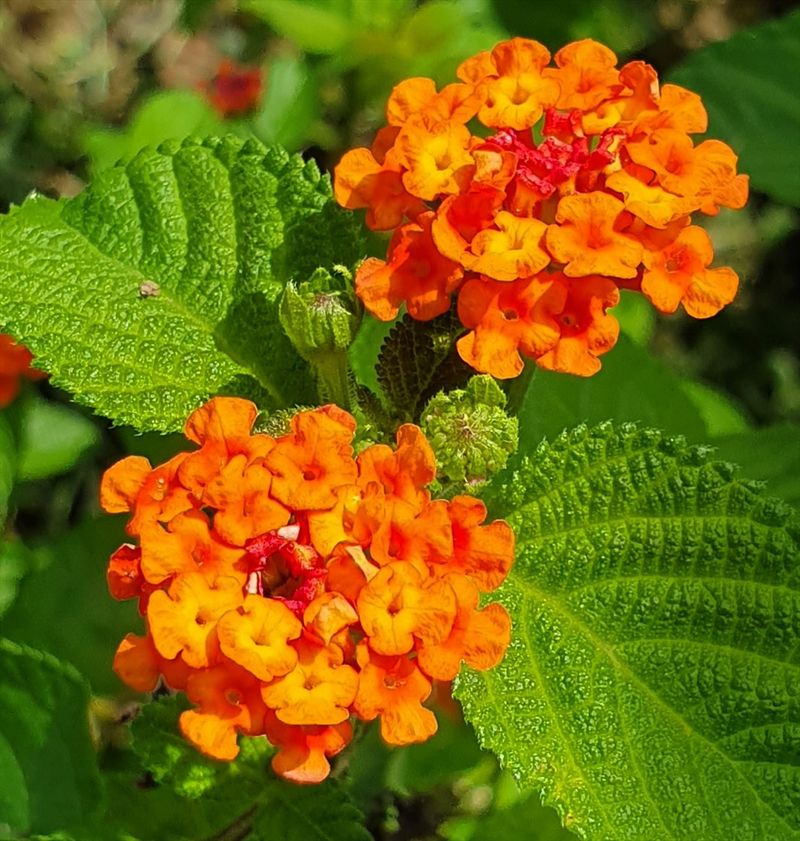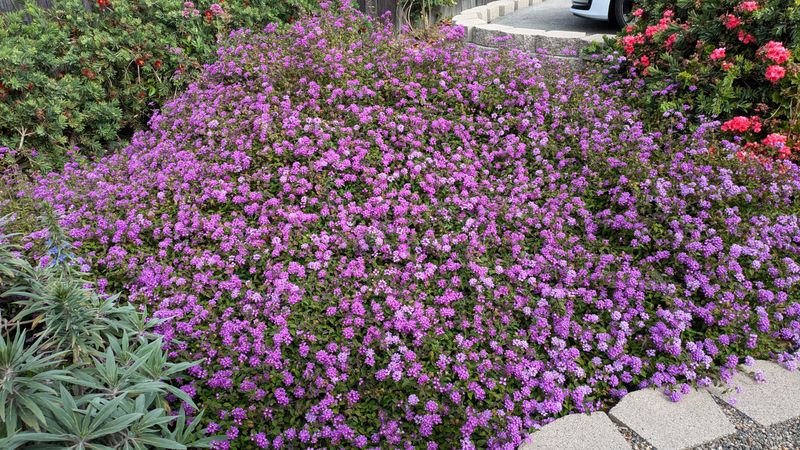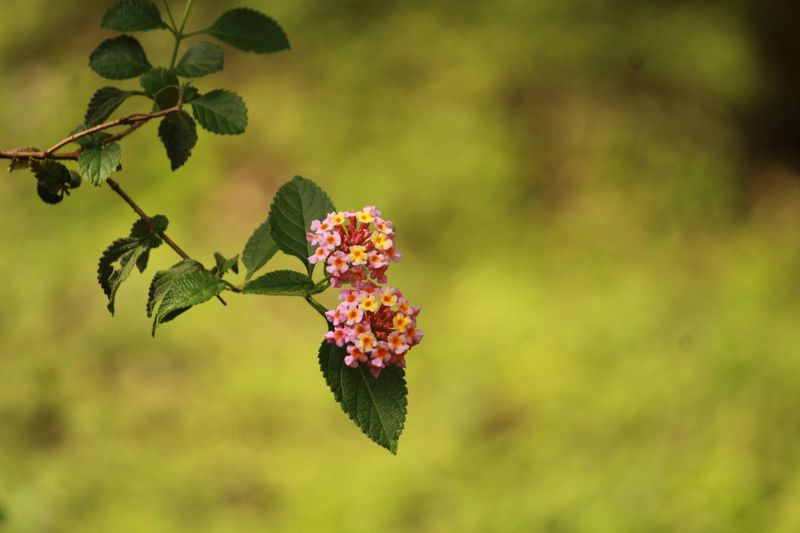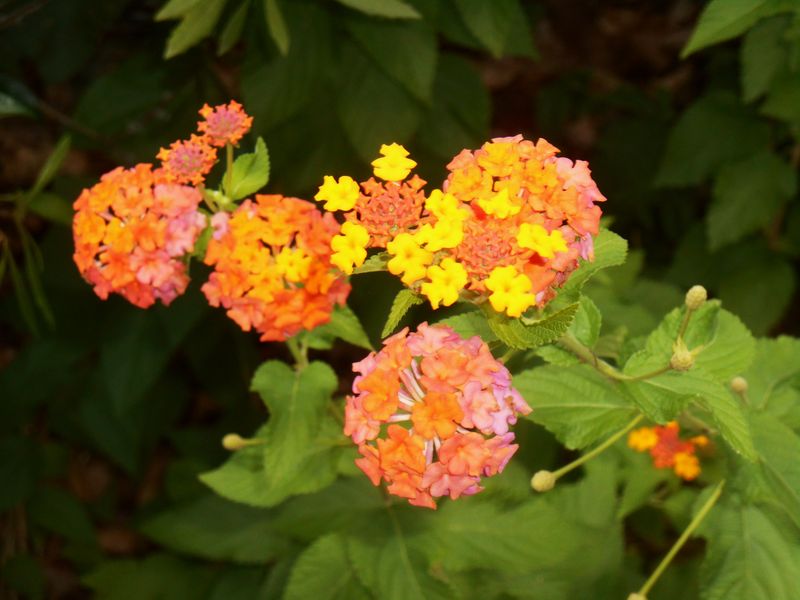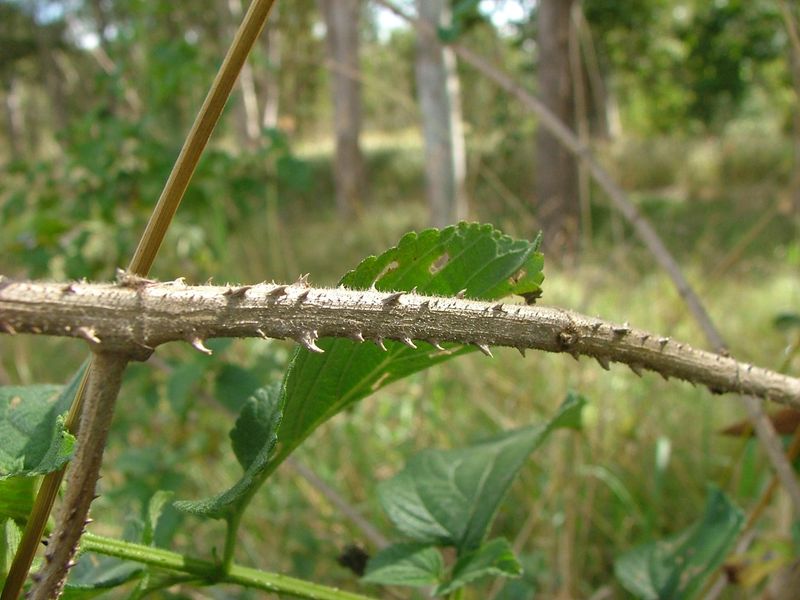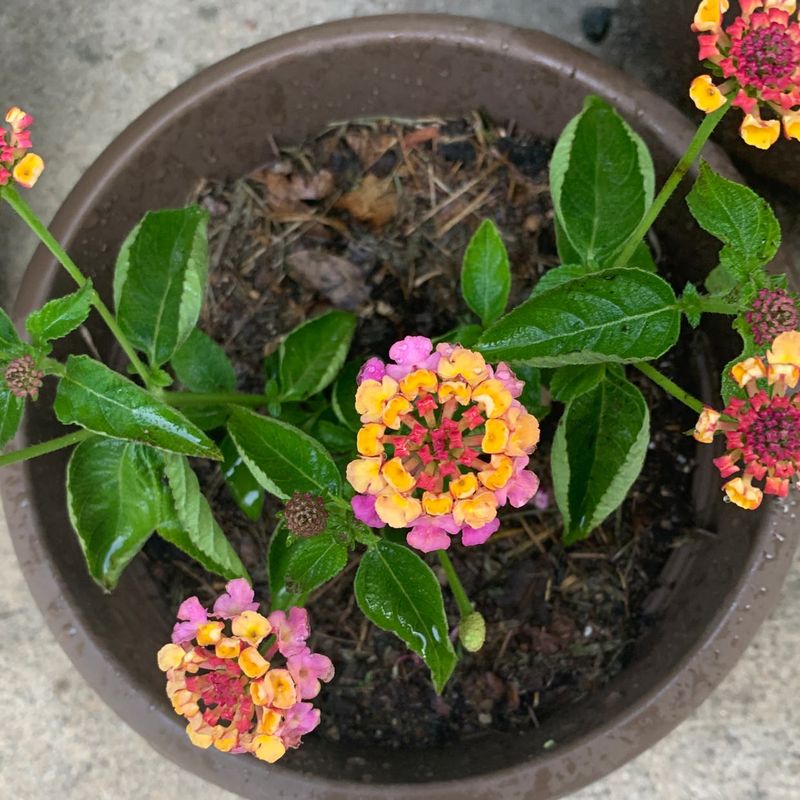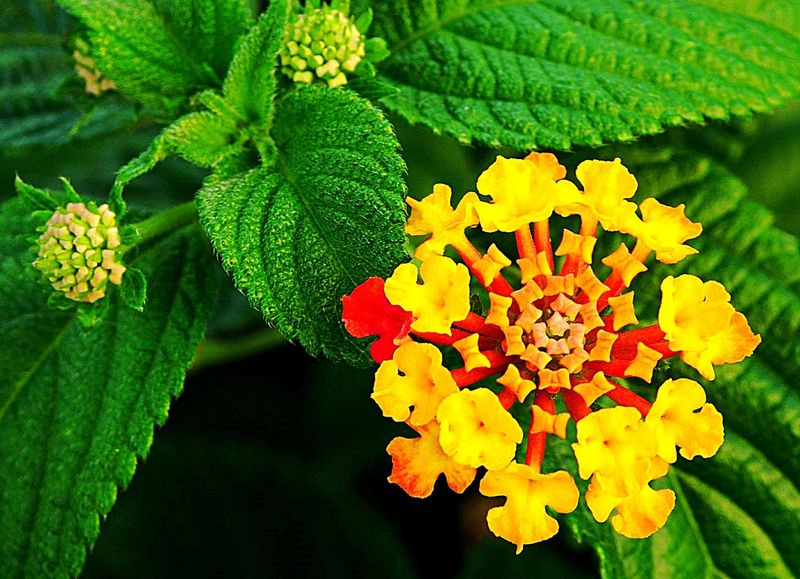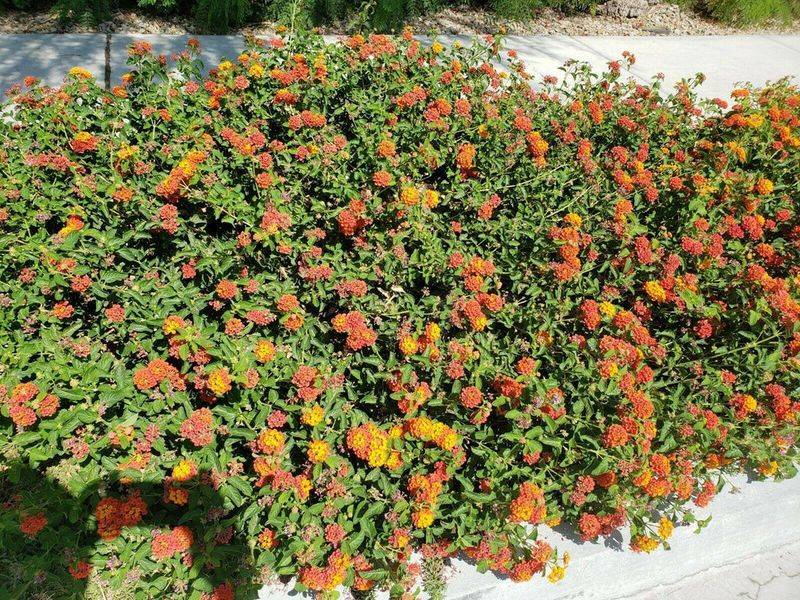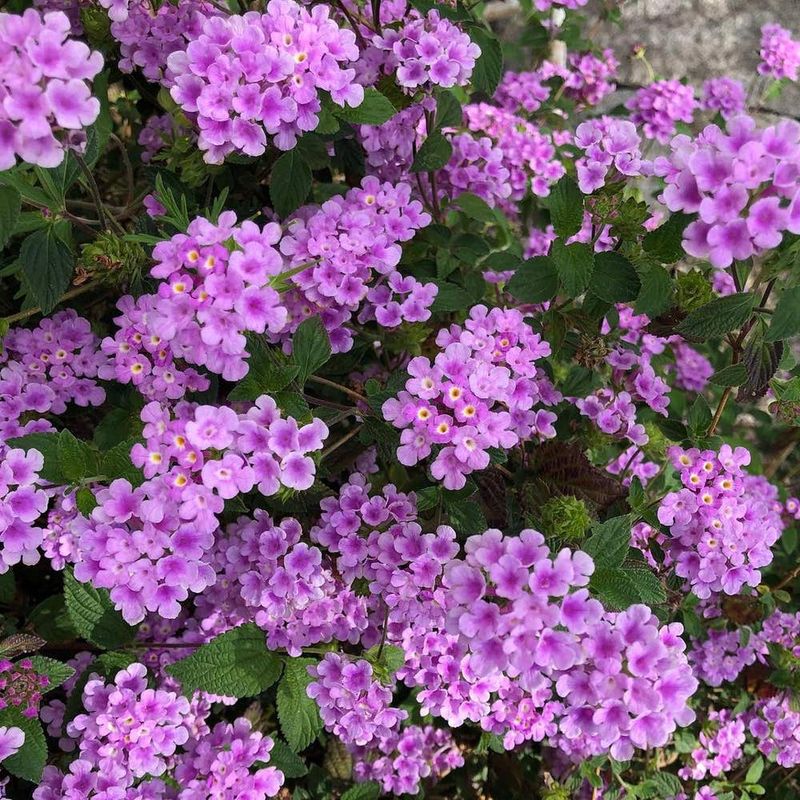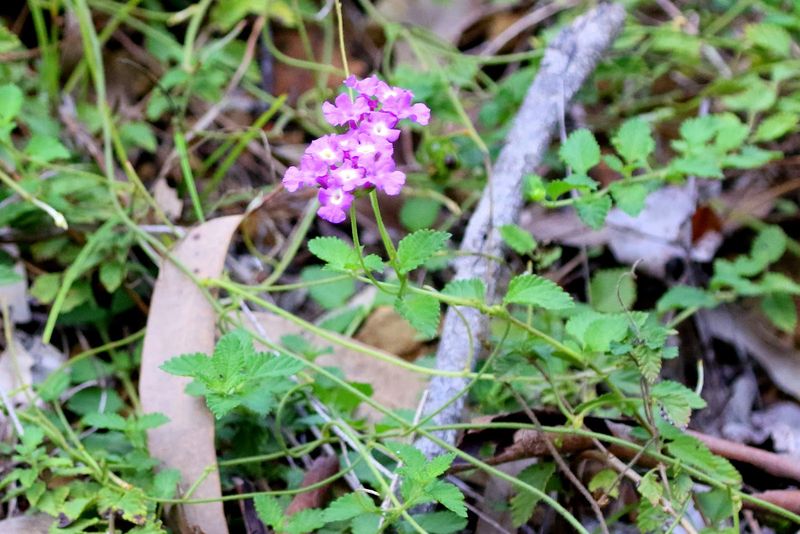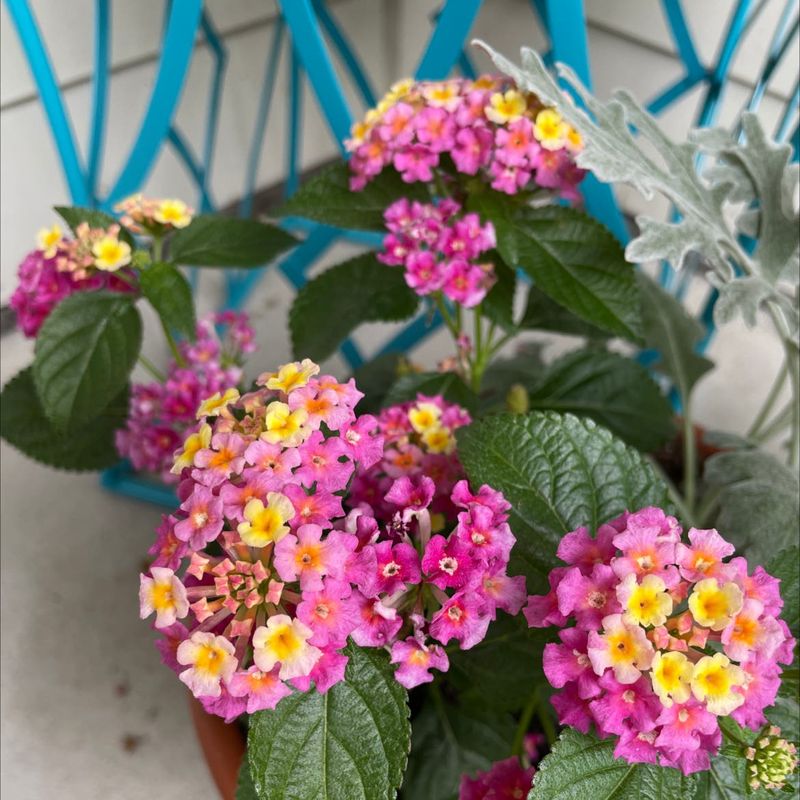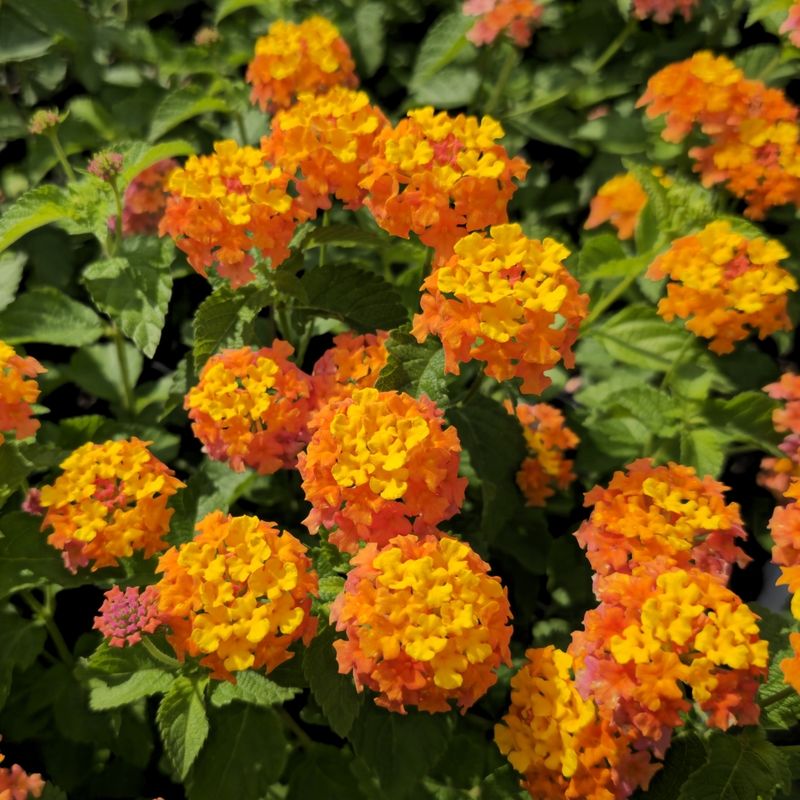Lantana, a vibrant and colorful plant, is often cherished for its ornamental beauty. However, beneath its appealing facade lies a host of challenges and issues that many gardeners and homeowners may not anticipate.
From its invasive nature to its impact on local ecosystems, lantana can quickly become more trouble than it’s worth.
In this blog post, we’ll explore 19 reasons why lantana may be more problematic than you might think, shedding light on its impact, care difficulties, and potential risks.
1. Invasive Nature
Lantana’s invasive nature is a considerable concern for gardeners. Its ability to spread rapidly allows it to dominate local flora, disrupting the balance of native ecosystems. In many regions, lantana is considered an invasive species, overtaking gardens and wild areas alike.
This aggressive growth can lead to the displacement of native plants, making it a problematic choice for environmentally conscious gardeners. Dealing with lantana’s spread requires constant vigilance and effort, often becoming a never-ending task for those who wish to maintain a healthy garden environment.
2. Toxicity to Pets and Humans
Lantana plants contain toxic compounds that can pose serious health risks to both pets and humans. Ingesting lantana can lead to symptoms such as vomiting, diarrhea, and even more severe reactions.
For pet owners, this toxicity means that lantana must be kept well out of reach of curious animals. Parents with small children must also exercise caution, as young ones may unknowingly interact with the plant.
The presence of lantana requires increased vigilance and preventive measures to ensure the safety of both pets and family members.
3. Difficult to Eradicate
Once lantana establishes itself, it can be incredibly challenging to eradicate. Its deep root system and resilience make it resistant to many common removal methods.
Gardeners often find themselves battling lantana growth repeatedly, as even small remnants can lead to regrowth. This persistence requires a strategic approach, often involving a combination of physical removal and chemical treatments.
The difficulty in eradicating lantana can deter even the most enthusiastic gardeners, turning a simple planting into a long-term commitment.
4. Impact on Local Wildlife
Lantana’s spread can significantly impact local wildlife, disrupting food sources and habitats. Native plants that provide essential nourishment and shelter are often overshadowed by lantana’s aggressive growth.
As a result, birds, insects, and other wildlife may find themselves struggling to survive. These changes can lead to a decline in local biodiversity, affecting the entire ecosystem.
Gardeners should carefully consider the ecological impact of introducing lantana to their landscapes, weighing the plant’s beauty against its potential harm to local wildlife.
5. Water Consumption
Lantana is known for its high water consumption, which can strain local water resources and lead to dry conditions in gardens. Its thirst for water can outpace other plants, leading to competition and potential damage to surrounding flora.
In areas prone to drought, lantana’s water needs can exacerbate existing water shortages, putting additional stress on the environment.
Sustainable gardening practices may be compromised by lantana’s presence, making it an unsuitable choice for those looking to conserve water. Gardeners must be mindful of lantana’s impact on water usage, particularly in arid regions.
6. Allergy Concerns
For individuals with allergies, lantana can be a source of discomfort. The plant’s pollen and scent may trigger allergic reactions, leading to symptoms like sneezing, itching, and respiratory issues.
Allergic reactions can diminish the enjoyment of outdoor spaces, especially for those sensitive to lantana’s allergens. Gardeners and homeowners must consider these potential drawbacks, particularly if family members are known to have plant-related allergies.
Opting for alternative plants with fewer allergenic properties may be a wise choice for creating a more comfortable and enjoyable garden environment.
7. Requires Frequent Pruning
Lantana requires frequent pruning to keep it in check and maintain its desired appearance. Without regular maintenance, the plant can become unruly and overgrown, detracting from the garden’s aesthetic appeal.
This ongoing trimming can be labor-intensive, especially for those with larger gardens or multiple lantana plants. The need for consistent care can be a deterrent for gardeners seeking low-maintenance landscaping options.
Consideration of the time and effort required for lantana care is essential before deciding to include it in garden designs, as it may not align with a desire for minimal upkeep.
8. Fire Hazard Potential
In certain climates, particularly those prone to dry conditions, lantana can pose a fire hazard. Its dry and woody stems are highly flammable, increasing the risk of fire in areas with existing wildfire threats.
Homeowners in fire-prone regions must exercise caution when planting lantana, ensuring it’s kept away from structures and other fire-sensitive areas.
Regular maintenance to remove dead and dry material can help mitigate this risk, but the potential hazard remains a significant consideration for those living in areas susceptible to wildfires.
9. Limited Cold Tolerance
Lantana’s limited cold tolerance can be a challenge for gardeners in cooler climates. The plant may suffer damage or die back during frost or freeze conditions, requiring additional care and protection.
For those living in areas with harsh winters, lantana may not be a viable long-term option without significant effort to shield it from the cold.
This need for extra care can deter gardeners seeking hardy plants that thrive without intensive intervention. The plant’s vulnerability to cold stresses the importance of climate consideration when choosing lantana for landscape designs.
10. Competes with Native Flora
Lantana’s aggressive growth allows it to compete with and often overshadow native flora. This competition can lead to reduced biodiversity, as lantana outcompetes local plants for resources like sunlight, water, and nutrients.
The displacement of native species can alter local ecosystems, affecting both plant and animal life.
Gardeners and conservationists must be mindful of lantana’s impact on native vegetation, considering alternative plant options that support and enrich local biodiversity. A thoughtful approach to plant selection can preserve the natural balance and prevent the unintended consequences of introducing invasive species.
11. High Maintenance Requirements
Lantana is known for its high maintenance needs, requiring regular attention to thrive. From watering and fertilizing to pruning and pest control, the plant demands consistent care.
This level of maintenance can be overwhelming for those seeking a more relaxed gardening experience. Homeowners must carefully weigh the benefits of lantana’s beauty and color against the time and effort needed to maintain it.
For those unwilling to devote the necessary resources, lantana may not be the best choice, as its care demands can overshadow its ornamental appeal.
12. Thorny Stems
Lantana’s thorny stems can present a challenge for gardeners, making pruning and handling more difficult. These thorns can cause injury, particularly for those without proper gardening gloves.
The risk of scratches and punctures adds an additional layer of caution when working with lantana, potentially deterring gardeners from regular maintenance tasks. Homeowners must consider the implications of lantana’s thorny nature, especially in gardens where children or pets play.
The need for protective gear and careful handling can make lantana a less attractive option for those seeking a safe and easy-to-manage garden environment.
13. Attracts Pests
Lantana is known to attract a variety of pests, including aphids, whiteflies, and spider mites. These pests can cause significant damage to the plant and may spread to other nearby flora.
The presence of pests can lead to the need for increased pest control measures, including chemical treatments and regular monitoring. This added responsibility can be burdensome for gardeners who prefer a more natural and organic approach.
The attraction of pests is a critical factor to consider when planting lantana, as it may introduce additional challenges and disrupt the overall health of the garden ecosystem.
14. Short Blooming Season
Lantana’s blooming season is relatively short, which may be disappointing for those seeking year-round color in their gardens. While the plant offers vibrant blooms, its flowering period can be limited, leading to less visual appeal during off-seasons.
Gardeners must weigh the beauty of lantana’s flowers against the brevity of its bloom. For those desiring continuous color, alternative plant options may better meet their needs.
Understanding lantana’s blooming cycle is essential for planning a garden that maintains its aesthetic appeal throughout the year, avoiding periods of dullness.
15. Spreads Unwanted Seeds
Lantana has a tendency to spread through seed dispersal, leading to unwanted growth in gardens and surrounding areas. This characteristic can result in lantana appearing in unexpected places, often outcompeting other desired plants.
Gardeners must be vigilant in managing lantana’s seed spread to prevent it from becoming a nuisance.
Regular monitoring and removal of unwanted seedlings are often necessary to maintain control. This aspect of lantana’s growth can be a significant drawback, particularly for those who prefer a more controlled and deliberate garden design.
16. Potential Soil Depletion
Lantana’s nutrient demands can lead to soil depletion over time, affecting the health of other plants in the garden. The plant’s aggressive growth can exhaust soil nutrients, requiring additional fertilization to maintain balance.
This need for soil management can add complexity to garden care, particularly for those unfamiliar with nutrient management practices.
Gardeners must consider lantana’s impact on soil health, implementing strategies to replenish nutrients and support overall plant vitality. For those seeking a low-maintenance garden, lantana’s potential for soil depletion may present an unwanted challenge.
17. Leaf Litter
Lantana leaves often drop, creating leaf litter that requires regular cleanup to maintain a tidy garden appearance. This ongoing task can be a nuisance for homeowners seeking a clean and orderly outdoor space.
The accumulation of leaf litter can also affect the health of other plants by blocking sunlight and trapping moisture.
Gardeners must consider the time and effort required to manage lantana’s leaf litter, weighing it against the plant’s ornamental appeal. For those prioritizing ease of maintenance, lantana’s tendency to shed may be a significant drawback.
18. Mismatched Aesthetic
Lantana’s bold colors and dense growth may not complement every garden design. Its appearance can clash with certain aesthetic themes, leading to a mismatched and disjointed look.
Gardeners must carefully consider lantana’s visual impact, ensuring it aligns with their desired style and complements existing plants.
For those with specific design visions, lantana may not fit seamlessly into the overall garden scheme. Thoughtful planning and consideration of color palettes are essential to avoid a chaotic and unharmonious garden appearance.
19. Limited Pollinator Support
While lantana may attract some pollinators, it often fails to provide substantial support for bees and butterflies compared to other flowering plants. This limitation can affect overall garden vitality, as pollinators play a crucial role in plant reproduction.
For gardeners focused on creating a pollinator-friendly environment, lantana may not be the ideal choice. Exploring alternative plants that offer more robust support for pollinators can enhance garden health and biodiversity.
The decision to plant lantana should consider its limited contribution to pollinator populations, balancing beauty with ecological benefits.
